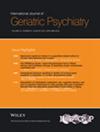Meaningful Moments of Connection: How People Affected by Dementia and Their Carers Living at Home Understand, Interpret and Experience Everyday Aesthetics
Abstract
Objectives
This study considers how people affected by dementia living in their own homes understand and interpret everyday aesthetics and what relevance this holds in their everyday lives.
Methods
Nine households, comprising ten family carers and seven people living with dementia, shared their self-identified meaningful moments of connection reflective of their personal understanding and interpretation of everyday aesthetics. Data collection involved a range of creative and self-initiated approaches, including scrapbooking, photography, and elicitation interviews. Data were analysed using reflective thematic analysis.
Results
Six discrete but interlinked themes were identified, namely: (1) Connection with others; (2) Connection with materiality; (3) Connection with self-image; (4) Connection with pride and societal value; (5) Connection with enjoyable activities; and (6) Connection with the lived environment, that revealed how people affected by dementia self-identify everyday aesthetic experiences in their daily lives.
Discussion
Our findings show these self-identified experiences span multiple physical and psychological domains of everyday life, each of which acts to support the personhood and identity of the person living with dementia. We suggest that development of a new model of care based on everyday aesthetic needs and informed by people affected by dementia, might bridge the gap between theory and practice in person-centred care. Going forward, developing care practices and support systems which focus on identifying and fulfilling the aesthetic needs of people living with dementia may offer a novel way to enhancing independence and personal well-being.


 求助内容:
求助内容: 应助结果提醒方式:
应助结果提醒方式:


